
Here’s the full edition of our full-colour 74-page February edition of Tudor Life Magazine. The theme this month is “16th Century Europe”.
[Read More...]
Here’s the full edition of our full-colour 74-page February edition of Tudor Life Magazine. The theme this month is “16th Century Europe”.
[Read More...]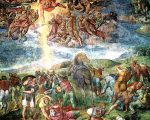
This feast day celebrates the conversion of St Paul (formerly Saul) on the road to Damascus. The story of the conversion of Saul, a man known for his persecution of Christians, is found in the Bible in Acts 9:
“And Saul, yet breathing out threatenings and slaughter against the disciples of the Lord, went unto the high priest, And desired of him letters to Damascus to the synagogues, that if he found any of this way, whether they were men or women, he might bring them bound unto Jerusalem. And as he journeyed, he came near Damascus: and suddenly there shined round about him a light from heaven: And he fell to the earth, and heard a voice saying unto him, Saul, Saul, why persecutest thou me? And he said, Who art thou, Lord? And the Lord said, I am Jesus whom thou persecutest: it is hard for thee to kick against the pricks. And he trembling and astonished said, Lord, what wilt thou have me to do? And the Lord said unto him, Arise, and go into the city, and it shall be told thee what thou must do. And the men which journeyed with him stood speechless, hearing a voice, but seeing no man.
[Read More...]
On this day in history, 9th January…
1514 – Anne of Brittany, wife of Louis XII of France, died at the Chateau of Blois. She was buried in the Cathedral Basilica of Saint Denis.
1522 – Adriaan Florenszoon Boeyens was elected as Pope, becoming Pope Adrian VI.
1554 – Birth of Pope Gregory XV, born as Alessandro Ludovisi, in Bologna, Italy.
1539 – Executions of Henry Pole, 1st Baron Montagu, and Henry Courtenay, Marquis of Exeter, on Tower Hill. They were found guilty of high treason in December 1538 for denying the King’s supremacy, desiring the King’s death and favouring and promoting Cardinal Reginald Pole, Montagu’s brother, “in his traitorous proceedings”.

In this week's video, Claire talks about Epiphany and Twelfth Night, how they were celebrated in the Tudor and medieval periods, and how they are celebrated today.
Here are YouTube videos showing the processions of the Three Kings in various Spanish cities on the night of 5th January:
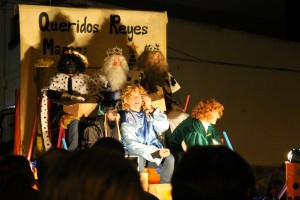
The Kings come to our village

Our Roscon de Reyes
Members can enjoy my talks on court revelry in the Tudor period:

On this day in history…
2 January:
1492 – King Boabdil surrendered Granada to the forces of King Ferdinand II of Aragon and Queen Isabella I of Castile – click here to read more.
1525 – Death of Sir William Uvedale. Uvedale had been created a Knight of the Bath and Knight of the Royal Body by Henry VII, and served Arthur, Prince of Wales, as his counsellor.
1536 – Eustace Chapuys, the Imperial Ambassador, arrived at the dying Catherine of Aragon’s bedside in Kimbolton Castle.
1539 – Geoffrey Pole, son of Sir Richard Pole and Margaret Pole, Countess of Salisbury, was pardoned after attempting suicide for the third time.
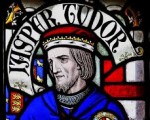
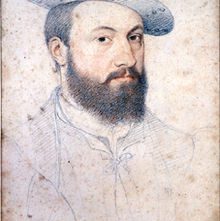
Anne de Montmorency
1562 – The Battle of Dreux between Catholics, led by Anne de Montmorency, and Huguenots, led by Louis I, Prince of Condé, during the first war of the French Wars of Religion. The Catholics were victorious, but both commanders were taken prisoner.
1576 - Katherine Palmer, Abbess of Syon, died in Mechelen during exile in Elizabeth I's reign. Just over a month earlier, on 8th November, her convent had been broken into by a mob of Calvinists, and it is thought that confronting the mob had been too traumatic for her. She was laid to rest at Mechelen in the Church of the Augustinians.
1578 (19th or 26th December) – Executions of Egremont Radcliffe and a man called Gray at Namur in Belgium. They were beheaded in the marketplace after being suspected of poisoning Don John of Austria.
1583 – John Somerville, convicted conspirator, was found dead in his cell at Newgate Prison. Death was by strangulation, and it was said that his death was suicide. His body was buried in Moorfields, and his head was put on display on London Bridge. Somerville had been convicted of high treason for intending to shoot and kill Elizabeth I.
1587 – Death of Thomas Seckford, lawyer and administrator, at Clerkenwell in Middlesex. He was buried at Clerkenwell, but then moved to the family vault at Woodbridge in Suffolk. Seckford served Mary I as Deputy Chief Steward of the Duchy of Lancaster and Elizabeth I as Master of Requests and Steward of the Marshalsea court.
1541 – A “very sickly” Agnes Tilney, Dowager Duchess of Norfolk, who was imprisoned in the Tower of London after the fall of her granddaughter, Catherine Howard, begged Henry VIII for forgiveness. She also confessed to having another £800 hidden at Norfolk House.
1558 – Death of John Holyman, Bishop of Bristol and Rector of Hanborough in Oxfordshire. He was buried at Hanborough Church, in the chancel.
1559 – Burial of John Bekinsau (Beckinsau), scholar and theologian, at Sherborne St John in Hampshire. Bekinsau was the author of the 1546 tract De supremo et absoluto regis imperio in support of Henry VIII's supremacy.
1562 – Death of Margaret Kitson (other married name Bourchier and née Donnington), Countess of Bath. She was buried at the church in Hengrave, near Bury St Edmunds in Suffolk, which was near Hengrave Hall, the Kitson family seat. Margaret was the second wife of merchant adventurer Sir Thomas Kitson.
1571 – Death of Richard Butler, 1st Viscount Mountgarret and son of Piers Butler, 1st Earl of Ossory and 8th Earl of Ormond. He was buried in St Canice's Cathedral, Kilkenny city.
1583 – Execution of Edward Arden, conspirator, at Smithfield. He was hanged, drawn and quartered after being convicted of high treason for plotting with John Somerville to kill Elizabeth I. Like Somerville, his body was buried at Moorfields and his head displayed on London Bridge.
1606 – Death of Richard Reynolds (Rainolde), clergyman and author, in Essex. His work included the 1563 “ A booke called the foundacion of rhetorike, because all other partes of rhetorike are grounded thereupon” and “ A chronicle of all the noble emperours of the Romaines … setting forth the great power, and devine providence of almighty God, in preserving the godly princes and common wealthes” (1571).
1495 – Death of Jasper Tudor, 1st Duke of Bedford and 1st Earl of Pembroke, at Thornbury. He was laid to rest at Keynsham Abbey, near Bristol. Jasper was the second son of Owen Tudor and Catherine of Valois, half-brother of Henry VI and uncle of Henry VII. It was alleged that he had an illegitimate daughter, Helen or Ellen, who was the mother of Stephen Gardiner, Bishop of Winchester. Click here to read more.
1505 – Birth of Thomas Wriothesley, 1st Earl of Southampton, Lord Privy Seal and Lord Chancellor to Henry VIII. He was the eldest son of William Wriothesley, York herald, and his wife, Agnes, and cousin of Charles Wriothesley, the Tudor chronicler.
1539 – Death of Sir John Shelton, uncle (by marriage) of Queen Anne Boleyn and Controller of the Joint Household of Mary and Elizabeth, Henry VIII's daughters from July 1536. He was buried at Shelton Church in Norfolk, in the chancel.
1540 (or 1542) – Birth of Thomas Allen, mathematician, astrologer and antiquary, at Uttoxeter in Staffordshire. Allen is known for his knowledge of mathematics, history and antiquity, astronomy and astrology, and philosophy. He served as Robert Dudley, Earl of Leicester's astrologer and the horoscope he cast for poet Philip Sidney can be found in the Bodleian Library's Ashmole manuscripts. His links with John Dee, Thomas Harriot and other mathematicians, combined with his knowledge of astrology, led to him being labelled a necromancer or magician.
1545 - William Cecil, the future Baron Burghley, married his second wife, Mildred Cooke (1526-1589), eldest daughter of Sir Anthony Cooke, Edward VI's tutor. Click here to read more.
1549 - Marguerite of Navarre (also known as Margaret of Navarre, Marguerite of Angoulême and Marguerite de France) died in Odos in France at the age of fifty-seven. Marguerite was the daughter of Louise of Savoy and Charles of Orléans, Count of Angoulême.
1584 – Probable date for the death of John Herd, physician, author and Rector of Waddington. He was buried at Waddington. Herd had acted as Physician to Archbishop Thomas Cranmer from c.1551 until August 1555. Herd wrote a verse history of England, covering the period 1461-1509, and was also said to have written a catechism of Christian doctrine for the young.
1598 – Death of Thomas Owen, judge and member of Parliament. He was buried at Westminster Abbey. Owen served Elizabeth I as Serjeant-at-Law, Queen's Serjeant and Judge of the Court of Common Pleas.
1608 – Death of William Davison, diplomat and administrator, at Stepney. He was buried there, in St Dunstan's Church. Davison served Elizabeth I as a diplomat, carrying out embassies to the Netherlands and Scotland, and as secretary. He is mainly known for his role in the execution of Mary, Queen of Scots. Davison claimed that Elizabeth I signed Mary's death warrant and told him that she wished the execution to take place in the Great Hall of Fotheringhay Castle without delay. As instructed, Davison asked Sir Christopher Hatton, the acting Lord Chancellor, to seal the warrant with the Great Seal of England to validate it. Elizabeth, on the other hand, claimed that she had signed the warrant and then asked Davison not to disclose this fact to anyone. When she learned that it had been sealed with the Great Seal, she then asked Davison to swear on his life that he would not let the warrant out of his hands unless he had permission from her. After Mary's execution, the poor Davison was arrested, tried and sentenced to imprisonment in the Tower, and heavily fined.
1480 – Baptism of Sir Edward Chamberlayne, soldier, a leading member of Oxfordshire gentry and Commissioner of the Peace for Oxfordshire (1506-1539) at Weston in Northamptonshire.
1534 – An imprisoned John Fisher, Bishop of Rochester, wrote to Thomas Cromwell beseeching him to provide him with a shirt and sheet, neither of which he had, some food, some books “to stir his devotion more effectually” and a priest to hear his confession. He also asked Cromwell to intercede with the King and to “move” him to release Fisher from “this cold and painful imprisonment”. Fisher had been imprisoned for denying the King's supremacy.
1541 - Several members of the Howard and Tilney family, plus their staff, were indicted for misprision of treason for covering up the “unlawful, carnal, voluptuous, and licentious life” of Queen Catherine Howard while she lived with the Dowager Duchess of Norfolk at Lambeth.
1545 – Birth of George Bannatyne, compiler of the “Bannatyne Manuscript”, at Edinburgh. The “Bannatyne Manuscript” is an anthology of Scots literature and included poems by Bannatyne, Alexander Montgomerie, Alexander Scott, David Lyndsay, William Dunbar, Robert Henryson and King James I.
1557 – Burnings of John Rough and Margaret Mearing, Protestant martyrs, at Smithfield for heresy.
1558 (22nd or 28th) – Death of John Christopherson, Bishop of Chichester. He was buried at Christchurch, Newgate Street. He had been put under house arrest following his definition of Protestantism as “a new invention of new men and heresies” on 27th November 1558, preached in response to a sermon at Paul's Cross.
1513 – Birth of Sir Thomas Smith, scholar, humanist, colonialist diplomat (in Ireland) and political theorist, at Saffron Walden, Essex. He was the second son of sheep farmer, John Smith, and studied at Cambridge University and also in France and Italy. He served Edward VI as a Secretary of State, and was one of Elizabeth I's most trusted counsellors. He served her as a diplomat, Secretary of State and Chancellor of the Order of the Garter. Smith was the author of “De Republica Anglorum; the Manner of Government or Policie of the Realme of England” and “The Discourse of the Commonweal”.
1556 – Burial of Nicholas Udall (Yevedale), schoolmaster, cleric, humanist and playwright, at St Margaret's, Westminster. His play “Ralph Roister Doister”, which combined Latin comedy and English tradition, is regarded as the first English language comedy. He played a part in Anne Boleyn's coronation in 1533, composing verses for the pageant, and in 1534 he published his Latin text book, “Floures for Latine Spekynge”. In 1541, Udall was imprisoned for a few months at Marshalsea after committing buggery with his pupil Thomas Cheney, but he was back in favour enough the next year to be leading a group of scholars in translating “The Paraphrase of Erasmus upon the New Testament” for Queen Catherine Parr.
Udall's other works included translations of Erasmus's “Apophthegms”, Pietro Martire's “Discourse on the Eucharist” and Thomas Gemini's “Anatomia”, and the play “Respublica”.
1558 – Queen Elizabeth I moved from Somerset House to Whitehall Palace, which became her principal residence.
1558 – Death of Sir John Baker, administrator, Speaker of the House of Commons, Chancellor of the Exchequer and Under-Treasurer of England, in London. He was buried in Cranbrook Church in Kent.
1559 – Death of Henry Morgan, Bishop of St David's, at Wolvercote in Oxfordshire. He had been deprived of his bishopric after Elizabeth I's accession because of his refusal to accept the religious changes of her reign. He was buried at Wolvercote.
1568 – Roger Ascham, scholar and royal tutor, was taken ill, probably with malaria. He died on 30th December.
1588 – The assassination of Henri de Lorraine, 3rd Duke of Guise and founder of the Catholic League, at the Château de Blois. He was killed by King Henry III's bodyguards, “the Forty-five”, in front of the King. His brother, Louis II, Cardinal of Guise, was assassinated the following day. The League had been controlling France, and the King was forced to act against it.
1599 – Burial of Thomas Byng, civil lawyer, Regius Professor of the Civil Law at Cambridge and Master of Clare College, Cambridge. He was buried in Hackney Church, Middlesex.
1607 – Death of Sir John Fortescue, Chancellor of the Exchequer and Chancellor of the Duchy of Lancaster in Elizabeth I's reign.
1545 - King Henry VIII made his final speech to Parliament. Historian Robert Hutchinson describes it as “both measured and compelling”, and writes of how Henry wanted “to impart a stern message” to all of his subjects.
1604 – Death of Sir Thomas Cornwallis, Comptroller of the household of Mary I and member of Parliament, at the age of eighty-six. He was buried at Brome in Suffolk. Cornwallis was active in putting down Kett's Rebellion in 1549 and in 1553, after originally proclaiming Lady Jane Grey as Queen in Ipswich, he swapped sides and swore allegiance to Mary I.
Christmas Day - Happy Christmas!
1549 – Death of Stephen Vaughan, merchant, merchant adventurer, diplomat and administrator, in London. He was buried at London's St Mary-le-Bow. Vaughan served Sir Thomas Cromwell as a diplomat between 1524 and 1539, and moved into Henry VIII's service on Cromwell's fall. He acted as the King's Chief Financial Agent in the Netherlands from 1544 to 1546, and became Under-Treasurer of the Tower of London Mint in 1544.
1553 – Birth of Thomas Thomas, Puritan printer and lexicographer, in London. He became the printer of Cambridge University in 1583, and concentrated on printing Protestant theology and education works. He is known for his Latin dictionary.
1569 (25th or 26th) – Killing of Sir John Borthwick, soldier, diplomat and Protestant, near Bewcastle in Cumberland. He was killed by the Forster family as he was fighting on the side of James Stewart, 1st Earl of Moray and the Regent, against Mary, Queen of Scots's forces. Borthwick had served Edward VI as a diplomat, Elizabeth I as a military commander and Mary, Queen of Scots as a diplomat.
1587 – Death of Brian Darcy, magistrate, Sheriff of Essex, witch-hunter and contributor to the 1582 “A true and just recorde of the information, examination and confession of all the witches, taken at S. Oses”. “A True and Just Recorde” argued for harsher punishments for those found guilty of witchcraft.
1634 – Death of Lettice Blount (née Knollys, other married names: Devereux and Dudley) at the age of ninety-one. Lettice died at her home at Drayton Bassett and was buried beside her second husband, Sir Robert Dudley, Earl of Leicester, in the Beauchamp Chapel of St Mary's Church, Warwick.
1596 – Death of Sir Henry Curwen, member of Parliament, Justice of the Peace and Sheriff. He served Edward VI, Mary I and Elizabeth I loyally.
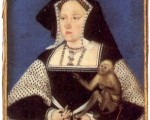
As today is the anniversary of the birth of Catherine of Aragon on 16th December 1485, I thought I would share with you some book recommendations and resources for finding out more about Catherine.
[Read More...]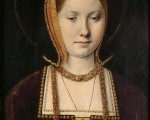
12 December:
1546 – Henry Howard, Earl of Surrey was led through the streets of London from Ely Place, where he had been held since the 2nd December, to the Tower of London. There, he was joined by his father, Thomas Howard, 3rd Duke of Norfolk, who was taken to the Tower by barge along the Thames.
1574 – Birth of Anne of Denmark, Queen of England, Scotland, and Ireland as consort of James I, at Skanderborg Castle, Jutland, Denmark. Anne was the second daughter of Frederick II, King of Denmark and Norway, and his wife, Sophia. She married James I, when he was James VI of Scotland, by proxy on 20th August 1589, and in a proper church ceremony on 23rd November 1589. The couple’s children included the future Charles I and Elizabeth Stuart, Queen of Bohemia. Anne died on 2nd March 1619 of consumption and dropsy, and was buried in Henry VII’s Chapel, Westminster Abbey.
1595 – Death of Sir Roger Williams, Protestant Welsh soldier and author, from a fever with his patron, Robert Devereux, Earl of Essex, at his side. He was buried at St Paul’s Cathedral. William served as a soldier in the Low Countries and France, and was second in command to Essex of the cavalry gathered at Tilbury in 1588. He wrote the 1590 “A Briefe Discourse of Warre”.

Historian and Tudor Life Magazine editor Gareth Russell will be joining us in the chatroom for a live chat at 11pm UK time on Friday 16th December.
[Read More...]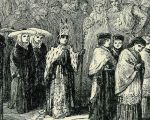
The 6th December was and is the feast of St Nicholas, or St Nicholas of Myra, the 4th century Bishop of Myra (modern-day Demre in Turkey), who is the patron saint of children, as well as sailors, merchants, archers, repentant thieves, brewers, pawnbrokers and students. In medieval and Tudor times, it was traditional for a choirboy to be chosen on 6th December or Childermas (Holy Innocents’ Day) as “Boy Bishop” to act as bishop and to lead processions around communities, collecting money for the church and parish funds, and to lead some religious services.
[Read More...]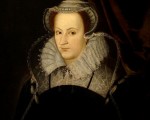
5th December:
1556 – Birth of Anne de Vere (née Cecil), Countess of Oxford, daughter of William Cecil, 1st Baron Burghley, and his second wife, Mildred (née Cooke), and wife of Edward de Vere, 17th Earl of Oxford. The marriage was not the happiest of matches, with de Vere refusing to acknowledge their daughter Elizabeth as his. The couple were eventually reconciled.
1558 – Death of Gabriel Dunne (Donne), Abbot of Buckfast and ‘keeper of the spiritualities’, in the diocese of London. He was buried at St Paul’s, before the high altar.
1560 – Death of King Francis II of France and King Consort of Scotland as husband of Mary, Queen of Scots. Francis was aged just fifteen when he died from some type of ear infection. He was succeeded as King of France by his brother, Charles, who became Charles IX. Francis was buried at the Cathedral Basilica of Saint-Denis on 23rd December.
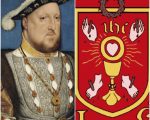
 On this day in history, 3rd December 1536, a proclamation was made to the rebels of the Pilgrimage of Grace offering them a pardon. It read:
On this day in history, 3rd December 1536, a proclamation was made to the rebels of the Pilgrimage of Grace offering them a pardon. It read:
"Proclamation of the King's pardon to the rebels of the different districts, viz. : That those of Yorkshire, with the city of York, Kingston upon Hull, Marshland, Holdenshire, Hexham, Beverley, Holderness, &c., on their submission to Charles duke of Suffolk, president of the council and lieutenant general in Lincolnshire, at Lincoln or elsewhere that he may appoint, shall have free pardons granted to them under the Great Seal without further bill or warrant or paying anything for the Great Seal. Richmond, 3 Dec., 28 Henry VIII."
The same proclamation was also made in "Northumberland, Cumberland, Westmoreland, York, city of York, bishopric of Durham, &c., and in the parts north of Lancaster, on their submission to Henry earl of Cumberland".
Henry VIII had also consented to the rebels' demand for a free Parliament to be held at York. The rebellion dispersed, but a further rebellion led by Sir Francis Bigod broke out in Yorkshire. Robert Aske tried to prevent it but Bigod went ahead. Bigod’s Rebellion failed and Bigod was arrested. Robert Aske and other men involved in the Pilgrimage of Grace rebellion – such as Lord Darcy, Thomas Percy and Robert Constable – were arrested, convicted of treason and executed.
You can read more about the Pilgrimage of Grace rebellion in the following articles:
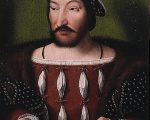
This is Part II of a four-part series, which seeks to look at what were considered the attributes of a Renaissance prince, and who of our four princes embodied the ideals of the Renaissance best. What were some of those themes? The idea of a Renaissance man stood for a person who strove to embrace knowledge and develop himself. This included concepts such as the arts, knowledge, physical achievements, and social ideals. More plainly and for a prince, this could include cultivating a court known for patronizing artists, musicians, and the like; establishing educational institutions, a good degree of physical fortitude, and things such as chivalric love or engaging in acts of charity.
[Read More...]
Merry Christmas! Here’s the December Tudor Life Magazine, an 80-page magazine packed with facts, fun and festivity. There’s a full 20-page feature on Tudor portraits, and there’s even a “Cut out Elizabeth I” fun activity! Enjoy this month’s magazine.
[Read More...]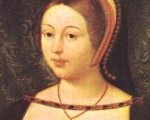
28 November:
1489 – Birth of Margaret Tudor, Queen of Scotland and consort of James IV, at Westminster Palace. Margaret was the eldest daughter of Henry VII and his wife, Elizabeth of York, and the sister of Henry VII. She spent her childhood at Sheen and at Eltham Palace, but was sent to Scotland at the age of thirteen to marry James IV.
1499 – Execution of Edward Plantagenet, styled Earl of Warwick, on Tower Hill. Edward was the son of George, Duke of Clarence, brother of Edward IV and Richard III, and so was a potential claimant to the throne. He was imprisoned in the Tower of London after Henry VII’s accession, and was executed for treason after the pretender Perkin Warbeck had allegedly plotted to free himself and Edward. He was buried at Bisham Abbey.
1557 – Death of Sir Robert Rochester, administrator. He was buried at the Charterhouse at Sheen. Rochester served Mary I as Comptroller of the Royal Household, Privy Councillor, Chancellor of the Duchy of Lancaster, Keeper of the Privy Seal and a member of Parliament.
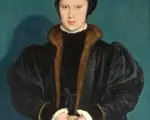
 Thank you to Heather R. Darsie for writing this article on Christina of Denmark...
Thank you to Heather R. Darsie for writing this article on Christina of Denmark...
Christina Oldenburg, born a Princess of Denmark and Norway, entered the world in November of 1521 or 1522. Being the daughter of Isabella of Austria, Christina was the niece of the Holy Roman Emperor, Charles V. Her father was King Christian II of Denmark and Norway. Christian II was deposed in January 1523, when the infant Christina was still quite small, and the family fled to the Netherlands. At that time, the Netherlands were under the regency of her maternal great-aunt, Margaret of Austria. Christina would never return to the country of her birth.
Christina was married twice. First, in 1533, she was wed to Francesco II Sforza, Duke of Milan, by proxy. She went to live in Milan in 1534. As part of the marriage contract, if Francesco died without any heirs, the Duchy of Milan would become part of the Holy Roman Empire. Francesco died in October of 1535, and the Duchy of Milan was indeed incorporated into the vast territories of the Holy Roman Empire. Another condition of the marriage contract was that should she become a widow, Christina would retain her rights to the city of Tortona for the rest of her life.
By 1537, Christina had assumed the title of Lady of Tortona. In mourning, Christina returned to the Low Countries, which were now under the regency of her maternal aunt, Mary of Hungary. Mary was sister to both Christina’s mother Isabella and Christina’s uncle, Charles V, Holy Roman Emperor. Christina briefly visited her elder sister Dorothea in Innsbruck on the former’s way to Brussels. Once at the court of her aunt, a suitable husband was sought for Christina.
Christina, not unlike her sister Dorothea, had many possible suitors. Going back to when Christina remained as a widow in the ducal palace in Milan, her first proposed suitor was Louis of Piedmont, heir to the throne of Savoy. Louis died before the marriage could take place. It was next suggested by Pope Paul III that Christina marry her foster son, who was also the great-nephew of the Pope. A French husband was proposed for Christina, too. There had been a long dispute over who held the rights to the Duchy of Milan, and France sought to solidify its claim through the marriage of Christina to the Duke of Angoulême. Charles V and the French king were unable to agree on terms regarding the fate of the Duchy of Milan, so this marriage came to naught.
Moving forward to Christina’s return to Brussels, she was famously painted by Hans Holbein the Younger in early 1538. Dressed in mourning clothes, Holbein had been sent by Henry VIII of England to capture Christina’s likeness while Henry’s ambassador floated the idea of marriage. Christina is reported to have responded, “If I had two heads, one should be at the King of England’s disposal.” It should be noted that Christina was a great-niece of Henry’s first wife, Katharine of Aragon. Mary of Hungary objected to the proposal and Henry was forced to abandon his suit in early 1539.
After that, Anna von Kleve, better known as Anne of Cleves, almost became sisters-in-law with Christina when Anna’s brother Wilhelm proposed marriage to Christina. Due to a dispute over territory which Wilhelm recently inherited, Charles V turned away Wilhelm’s proposal. Christina went on to marry Anna’s ex-fiancé, Francis, Duke of Bar, in July 1541. Sadly, this marriage put an end to a possible love-match which Christina would have enjoyed with René de Chalon, Prince of Orange. Her sister Dorothea supported the relationship, but ultimately, Christina had to marry Francis.
As Duchess-Consort of Lorraine, Christina enjoyed a reportedly happy marriage and gave birth to a son in February 1543. She had two daughters later, one of whom was named after her sister Dorothea. By June of 1545, Christina was widowed again. She became regent for her young son, but there was opposition from her brother-in-law. After mediation by her uncle, Charles V, it was agreed that Christina would be the main regent, but share the regency with her brother-in-law.
Christina never remarried, though she received more proposals. During wars with France in 1552, her son was taken by the French king and Christina’s regency was ended. Christina did not see her son again until 1558. In the meantime, she remained in Brussels. Christina did travel to England in April 1555 to Mary I’s court, returning to the Netherlands in May of 1555. After reunifying with her son, Christina served as his advisor and was again appointed regent when he travelled to France.
Also in 1559, Christina’s father, King Christian II, finally passed away. Her elder sister Dorothea then made a claim to the throne of Denmark and Norway. Dorothea was childless. Christina eventually convinced Dorothea to abandon her claim in favour of Christina’s son. Nothing ever came to Dorothea, Christina, or Christina’s son from this claim.
Christina returned to her dower city of Tortona in 1578, where she lived and ruled until her death in 1590.
Heather R. Darsie lives in the United States with her family and three parrots. She works in the legal field, with a focus on children. She obtained a Bachelor of Arts degree in German Languages and Literature, then a Juris Doctorate in American jurisprudence, and studied abroad in Costa Rica and France. Heather has always loved history. She first became acquainted with Elizabeth I when she was in middle school and chose to write a book report about her. Since then, she has always held an interest in the Renaissance and its numerous enigmatic citizens, with particular focus on the history of England and Italy. She is currently working on a book on the heraldry of Tudor women and is also researching Anne of Cleves.
Picture: Painting of Christina by Hans Holbein the Younger, c. 1538, National Gallery.
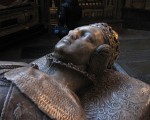
On this day in history events for 21-27th November.
21 November:
1495 – Birth of John Bale, churchman, Protestant playwright, historian and Bishop of Ossory, at Cove, near Dunwich, in Suffolk. Bale wrote twenty-four plays, including “Three Laws of Nature, Moses and Christ, corrupted by the Sodomytes, Pharisees and Papystes most wicked”, “A Tragedye; or enterlude manifesting the chief promyses of God unto Man”, “The Temptacyon of our Lorde”, “A brefe Comedy or Enterlude of Johan Baptystes preachynge in the Wyldernesse, etc” and “ Kynge Johan”. His most famous work is his Illustrium majoris Britanniae scriptorum, hoc est, Angliae, Cambriae, ac Scotiae Summarium… (“A Summary of the Famous Writers of Great Britain, that is, of England, Wales and Scotland”), which was his effort to record every work by a British author.
1558 – Death of James Bassett, courtier and stepson of Arthur Plantagenet, Viscount Lisle. Bassett was a member of Philip of Spain’s Privy Chamber and private Secretary to Mary I. He was buried at Blackfriars, London.
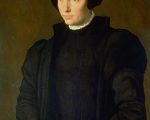
Thank you to our regular contributor, Heather R. Darsie, for introducing us to this interesting 16th century woman.
Dorothea Oldenburg, Princess of Denmark and Norway,1 was born to King Christian II of Denmark and Norway, and Isabella of Austria on 10 November 1520. Isabella of Austria was younger sister to Charles V, Holy Roman Emperor, and a niece of Katherine of Aragon. Dorothea was a niece of Charles V.
Dorothea’s father, Christian II, was forced to abdicate his throne on 20 January 1523. Thereafter, Dorothea and her family, including her better-known little sister Christina of Denmark, fled to the Netherlands. Three-year-old Dorothea’s great-aunt, Margaret of Austria, was serving as Regent of the Netherlands; Margaret served in this capacity from 1507 to 1515, and again from 1519 until 1530. Margaret was pro-English.
[Read More...]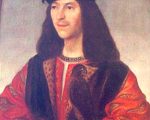
This is Part I of a four-part series by Heather R. Darsie, which seeks to look at what were considered the attributes of a Renaissance prince, and who of our four princes embodied the ideals of the Renaissance best.
What were some of those themes?
The idea of a Renaissance man stood for a person who strove to embrace knowledge and develop himself. This included concepts such as the arts, knowledge, physical achievements, and social ideals. More plainly and for a prince, this could include cultivating a court known for patronising artists, musicians, and the like; establishing educational institutions, a good degree of physical fortitude, and things such as chivalric love or engaging in acts of charity.
[Read More...]I loved the open day! It was a unique and enjoyable idea. I loved talking with a wide range of like-minded people as myself, on my favourite subjects. I get to do it every working day, and I love doing that, so just taking part was in itself a pleasure. I didn’t take part as much as I’d have liked, due to being busy as a mum, but from what I did, the highlight had to be talking about Henry VIII and six wives... my favourite subject. Just getting an opportunity to talk about it in depth with people whose vast knowledge matches my own. Getting advice I also found very useful.

 Here is a reminder of our expert live-chats programme for today's Tudor Society Open Day. Just head on over to the https://www.tudorsociety.com/opendaychatroom/ at the following times to get asking your questions and discussing these Tudor people and topics. We hope you enjoy it and a big thank you to all of these historians and authors.
Here is a reminder of our expert live-chats programme for today's Tudor Society Open Day. Just head on over to the https://www.tudorsociety.com/opendaychatroom/ at the following times to get asking your questions and discussing these Tudor people and topics. We hope you enjoy it and a big thank you to all of these historians and authors.
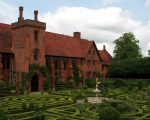
 On this day in history, the 18th October 1555, Elizabeth, daughter of Henry VIII and Anne Boleyn, finally received permission from her half-sister, Mary I, to leave court and travel to her own estate at Hatfield, rather than return to house arrest in Woodstock.
On this day in history, the 18th October 1555, Elizabeth, daughter of Henry VIII and Anne Boleyn, finally received permission from her half-sister, Mary I, to leave court and travel to her own estate at Hatfield, rather than return to house arrest in Woodstock.
Elizabeth, the future Elizabeth I, had been treated with suspicion by Mary and her council since Wyatt's Revolt in early 1554. David Starkey says of the Revolt: "The rebellion of 1554 - known from the leader of its most important sector as Wyatt's Revolt - brought Elizabeth to her nadir. It led to the most dangerous and difficult time of her life when she feared imminent execution or murder. She even expressed a preference as to how she should die: like her mother, by the sword, rather than by the axe."1
[Read More...]

On this day in history events for week 17th to 23rd October.
17th October:
1560 – Baptism of Walter Marsh, spy and Protestant martyr, at St Stephen’s Church, Coleman Street, London. Marsh was burned to death in Rome’s Campo dei Fiori after having his tongue and hands cut off. He had been accused of being paid by Elizabeth I to spy on Catholics and showing contempt for the Eucharist.
1586 – The poet, courtier and soldier Sir Philip Sidney died as a result of an injury inflicted by the Spanish forces at the Battle of Zutphen in the Netherlands. His body was returned to England and laid to rest on the 16th February 1587 in St Paul’s Cathedral.
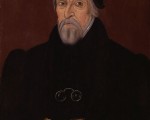
On this day in history events for week beginning 10th October…
10th October:
1505 (10th or 11th) – Death of William Barons (Barnes), Bishop of London and former Master of the Rolls. He was buried at St Paul’s Cathedral.
1530 – Death of Thomas Grey, 2nd Marquis of Dorset, magnate, soldier and courtier. He was buried at Astley Collegiate Church in Warwickshire. Grey’s offices included Constable of Warwick Castle and of Kenilworth Castle, and he also acted as Chief Answerer at the marriage of Prince Arthur and Catherine of Aragon. Grey was also the grandfather of Lady Jane Grey.
1549 – Edward Seymour, Duke of Somerset and Lord Protector, was ordered to leave Windsor Castle and to give himself up. He had moved there with the young Edward VI on the 6th October, from Hampton Court Palace, after learning that his protectorship was in danger.
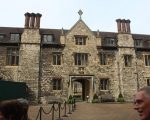
In this week’s Claire Chat’s video I talk about my recent visit to London Charterhouse and the history of the site. I hope you enjoy the talk and the photos.
[Read More...]